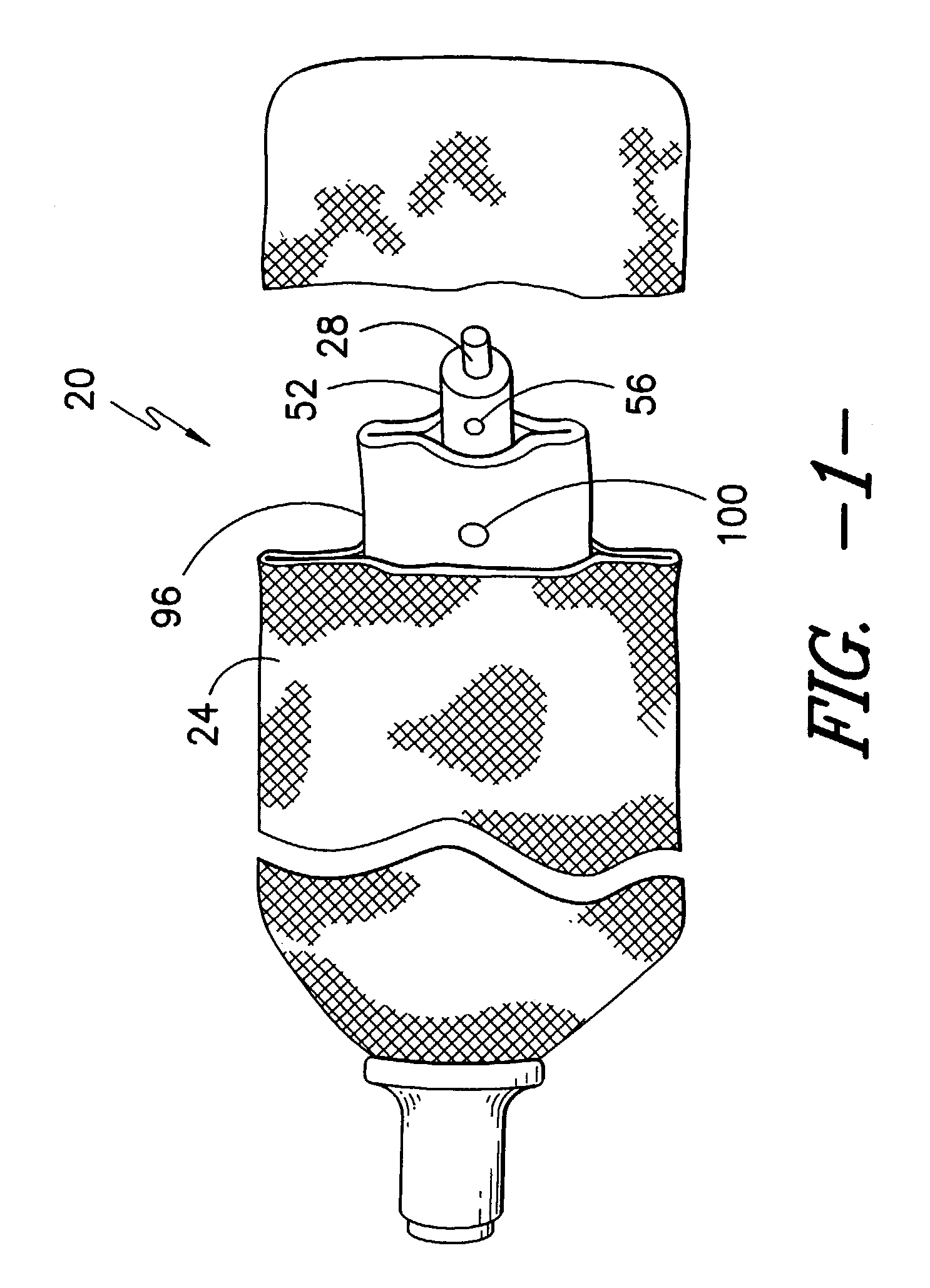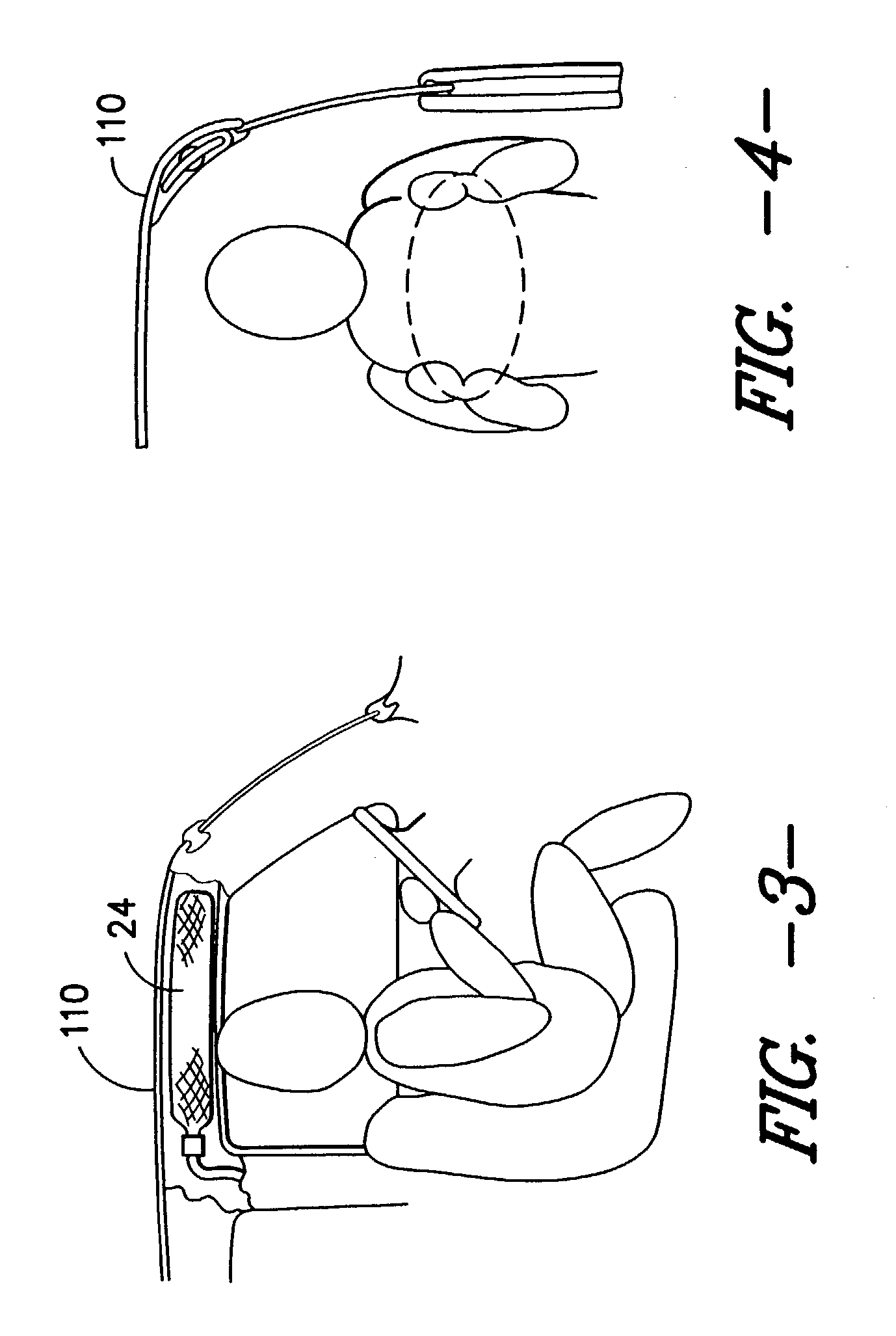Low permeability, high strength timing fabric for utilization within airbag inflation modules
- Summary
- Abstract
- Description
- Claims
- Application Information
AI Technical Summary
Benefits of technology
Problems solved by technology
Method used
Image
Examples
example 1
[0034] A fabric was woven on a Dornier rapier loom which comprised, as warp yarns, two-ply and twisted unsized polyethylene terephthalate 840 denier T-787 yarns (from KoSa), and, as fill yarns, single-ply polyethylene terephthalate 1300 denier T-800 yarns (also from KoSa), in a plain weave pattern at 51 ends by 22 picks per inch of base fabric. The woven fabric exhibited an overall weight of about 17.5 ounces per square yard and a thickness (on average) of about 835 microns. The fabric was then, without scouring or cleaning of the fabric, coated with a solvent-based silicone coating comprising 30% of 4-7224 Silicone Rubber from Dow Coming at a final dry add-on coating weight of 1.5 ounces per square yard (on average) utilizing an 830 micron gap setting on the knife coater, which permitting complete filling of the yarn interstices and minimized excess covering of the warp ends (in order to reduce blocking). Talc was applied over the coating as an anti-blocking agent as a supplemental...
example 2
[0036] The same base fabric as in EXAMPLE 1 was produced but coated at a gap setting of about 950 microns (for thicker coating). The resultant coating add-on dry weight was about 2.0 ounces per square yard and, after curing at a temperature of about 170.degree. C., the resultant total weight of the fabric was about 20.0 ounces per square yard. The resultant air permeability was measured to be 0.12 cfm at 2,500 Pa and the warp direction tensile strength measured 1,128 lb / in with an elongation of 44.3% at break. The resultant fill direction tensile strength measured 838 lb / inch with an elongation of 33.3% at break. The fabric also passed the aforementioned blocking test (although the time required for separation was a slower than for the fabric of EXAMPLE 1). Although such an alternative is potentially preferred, this example required a slower line speed to coat the target fabric and the amount applied was in excess of that needed to provide the low air permeability desired.
example 3
[0037] The same base fabric as in EXAMPLE 1 was produced but coated at a gap setting of about 730 microns (for thinner coating). The resultant coating add-on dry weight was about 1.4 ounces per square yard and, after curing at a temperature of about 170.degree. C., the resultant total weight of the fabric was about 19.4 ounces per square yard. The resultant air permeability was measured to be 0.26 cfm at 2,500 Pa warp direction tensile strength measured 1,034 lb / in with an elongation of 45.3% at break. The resultant fill direction tensile strength measured 865 lb / inch with an elongation of 33.7% at break. Thus, even at such a low coating add-on weight, the interstices were completely filled so as to insure adequate control of air permeability and proper blocking measurements.
[0038] The accompanying drawings, which are incorporated in and constitute a part of this specification, illustrate several potentially preferred embodiments of the invention and together with the description se...
PUM
| Property | Measurement | Unit |
|---|---|---|
| Pressure | aaaaa | aaaaa |
| Angle | aaaaa | aaaaa |
| Volumetric flow rate | aaaaa | aaaaa |
Abstract
Description
Claims
Application Information
 Login to View More
Login to View More - Generate Ideas
- Intellectual Property
- Life Sciences
- Materials
- Tech Scout
- Unparalleled Data Quality
- Higher Quality Content
- 60% Fewer Hallucinations
Browse by: Latest US Patents, China's latest patents, Technical Efficacy Thesaurus, Application Domain, Technology Topic, Popular Technical Reports.
© 2025 PatSnap. All rights reserved.Legal|Privacy policy|Modern Slavery Act Transparency Statement|Sitemap|About US| Contact US: help@patsnap.com



